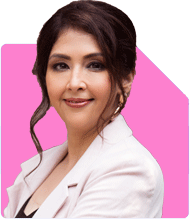31-Year-Old Digital Marketer - How to Enhance Investment Journey?
Ramalingam Kalirajan |10881 Answers |Ask -Follow
Mutual Funds, Financial Planning Expert - Answered on Jan 23, 2025
He has an MBA in finance from the University of Madras and is a certified financial planner.
He is the director and chief financial planner at Holistic Investment, a Chennai-based firm that offers financial planning and wealth management advice.... more

Hello Sir/Madam, My age is 31,I got married in 2021, and I have a one-year-old son. I work as a digital marketing professional, earning ₹80,000 per month. I have a home loan of ₹20.30 lakhs that started in 2020. I am currently paying an EMI of ₹18,000 per month, and since last year, I have been paying an additional ₹4,000 per month. I am also planning to make a ₹1 lakh prepayment from next year, for which I am saving ₹5,000 per month to close it earlier. For investments, I have been doing an SIP of ₹5,000 per month for the last two years, which I increased to ₹10,000 last year for my retirement planning. Additionally, I have a ₹50 lakh term insurance policy and am currently building an emergency fund. I believe I am managing my investment journey well, except for the house. Could you please suggest some points to enhance this journey?
Let's review your current financial situation and suggest some enhancements to improve your financial journey.
Strengths of Your Current Financial Plan
Income and Savings
Earning Rs. 80,000 per month is a strong base for savings and investments.
You're already contributing Rs. 10,000 per month towards your retirement through SIPs.
Saving Rs. 5,000 monthly for prepayment of your home loan is a prudent approach.
Home Loan Repayment Strategy
You have an active strategy to reduce your home loan faster by paying an additional Rs. 4,000 per month.
The Rs. 1 lakh prepayment plan from next year will significantly reduce your interest burden.
Insurance Coverage
You have a Rs. 50 lakh term insurance policy.
This coverage ensures your family's financial security in case of an untimely event.
Investment for Retirement
Your SIP investments are steadily growing, and increasing your SIP from Rs. 5,000 to Rs. 10,000 is a great move.
The goal of building wealth for retirement is well-defined.
Areas for Improvement
While your current strategy is strong, there are a few areas where you can make adjustments for greater efficiency and financial strength.
1. Home Loan Prepayment Strategy
Evaluate Loan Prepayment Impact
You're saving Rs. 5,000 a month for a Rs. 1 lakh prepayment. This will help reduce the principal, but it’s important to assess the long-term benefits.
Consider reallocating some funds from your emergency fund or monthly savings into a lump-sum prepayment, as this will reduce the overall interest burden faster.
A quicker reduction of principal can result in significant savings on interest payments over time.
Opt for a Balance Between Loan Prepayment and Investments
Prioritize investments for long-term growth, especially equity-based funds, to take advantage of compounding.
Ensure that prepayment does not come at the cost of your investment goals, particularly for retirement.
Reassess Interest Rates
If your home loan interest rate is high, consider refinancing to a lower rate, if possible.
This can save you money on interest and reduce your overall financial burden.
2. Investment Strategy for Retirement
Review Asset Allocation
While you are investing in SIPs for retirement, it is essential to regularly assess your asset allocation.
Diversify across equity funds, debt funds, and hybrid funds to ensure balanced growth.
Since you are young, maintaining a higher allocation towards equity will offer greater growth potential. However, ensure you periodically reduce equity exposure as you approach retirement age.
Active Mutual Funds vs Direct Plans
You mentioned your SIPs; I recommend you invest through a Mutual Fund Distributor (MFD) with a Certified Financial Planner (CFP) credential rather than opting for direct plans.
While direct plans save on commissions, they may lack the ongoing advice and portfolio adjustments that an MFD offers, particularly as your financial situation evolves.
Investing through an MFD with CFP certification can provide professional guidance on asset allocation, tax-efficient strategies, and portfolio rebalancing.
Plan for Systematic Withdrawal Plans (SWPs)
As you build your retirement corpus, consider shifting towards a Systematic Withdrawal Plan (SWP) to convert your lump sum investment into a regular income post-retirement.
This option offers flexibility and ensures a steady income stream while maintaining the growth potential of your invested corpus.
3. Emergency Fund Management
Adequate Emergency Fund Size
You're in the process of building an emergency fund, which is essential.
Ensure that your emergency fund covers at least 6-12 months of living expenses, including your EMI payments.
Invest this fund in liquid or ultra-short-term debt funds, which provide better returns than a savings account, yet offer easy access when needed.
Reassess Emergency Fund Allocations
Once your fund reaches the target, consider rebalancing the amount, based on your current lifestyle and expenses.
As your income increases over time, you might need to adjust the size of the emergency fund accordingly.
4. Insurance and Financial Security
Review Insurance Coverage
Your Rs. 50 lakh term insurance is a good start, but it's important to evaluate whether it adequately covers your family's future needs.
As your income and responsibilities grow, you may want to consider increasing the coverage to ensure your family's financial security in case of any unforeseen events.
Consider Health Insurance
In addition to life insurance, health insurance is a critical aspect of financial security.
Ensure that you have adequate health insurance coverage for yourself and your family, especially considering the rising healthcare costs.
Look for comprehensive family floater plans or top-up policies that provide extensive coverage.
5. Tax Efficiency and Retirement Planning
Tax Planning for SIPs and Prepayments
When investing for retirement, be mindful of the tax implications.
Equity-based funds are subject to long-term capital gains (LTCG) tax, but the tax rate is lower than debt funds.
Debt funds are taxed as per the income tax slab, so a balanced approach to equity and debt investments will help optimize your taxes.
Utilize Tax-Saving Instruments
Continue investing in tax-saving instruments like PPF, NPS, or tax-saving fixed deposits under Section 80C.
NPS also offers additional tax benefits, and it would complement your retirement planning well.
6. Long-Term Financial Goals Beyond Retirement
Child’s Education Fund
With a young son, his education is likely to be a major financial goal in the coming years.
Begin investing in child-focused funds, which will ensure that the education corpus grows in line with inflation.
Plan for his higher education expenses early to ensure that you can comfortably meet his needs when the time arrives.
Increase SIP Contributions
As your income grows, increase your SIP contributions over time.
Aim to contribute a larger portion towards retirement savings, taking advantage of compounding.
Final Insights
Your financial journey is already on a good track. By enhancing your loan repayment strategy, optimizing your investments for retirement, ensuring tax efficiency, and safeguarding your family’s health and future, you will build a strong and resilient financial foundation. Focus on regular reviews of your asset allocation, increasing your SIP contributions, and balancing debt repayment with long-term investment goals.
Best Regards,
K. Ramalingam, MBA, CFP,
Chief Financial Planner,
www.holisticinvestment.in
https://www.youtube.com/@HolisticInvestment
You may like to see similar questions and answers below
Ramalingam Kalirajan |10881 Answers |Ask -Follow
Mutual Funds, Financial Planning Expert - Answered on Jul 08, 2024
Ramalingam Kalirajan |10881 Answers |Ask -Follow
Mutual Funds, Financial Planning Expert - Answered on May 15, 2025
Ramalingam Kalirajan |10881 Answers |Ask -Follow
Mutual Funds, Financial Planning Expert - Answered on Jun 02, 2025
Ramalingam Kalirajan |10881 Answers |Ask -Follow
Mutual Funds, Financial Planning Expert - Answered on Jul 06, 2025
Dr Dipankar Dutta |1839 Answers |Ask -Follow
Tech Careers and Skill Development Expert - Answered on Dec 13, 2025
Dr Dipankar Dutta |1839 Answers |Ask -Follow
Tech Careers and Skill Development Expert - Answered on Dec 13, 2025
Mayank Chandel |2575 Answers |Ask -Follow
IIT-JEE, NEET-UG, SAT, CLAT, CA, CS Exam Expert - Answered on Dec 13, 2025
Radheshyam Zanwar |6742 Answers |Ask -Follow
MHT-CET, IIT-JEE, NEET-UG Expert - Answered on Dec 13, 2025
Mayank Chandel |2575 Answers |Ask -Follow
IIT-JEE, NEET-UG, SAT, CLAT, CA, CS Exam Expert - Answered on Dec 13, 2025
Mayank Chandel |2575 Answers |Ask -Follow
IIT-JEE, NEET-UG, SAT, CLAT, CA, CS Exam Expert - Answered on Dec 13, 2025
Kanchan Rai |646 Answers |Ask -Follow
Relationships Expert, Mind Coach - Answered on Dec 12, 2025
Ravi Mittal |677 Answers |Ask -Follow
Dating, Relationships Expert - Answered on Dec 12, 2025
Ramalingam Kalirajan |10881 Answers |Ask -Follow
Mutual Funds, Financial Planning Expert - Answered on Dec 12, 2025
Ramalingam Kalirajan |10881 Answers |Ask -Follow
Mutual Funds, Financial Planning Expert - Answered on Dec 12, 2025











.jpg)













